
HOME
INTRO
SYMBOLS
ALMANAC
ECONOMY
GEOGRAPHY
STATE MAPS
PEOPLE
FORUM
NEWS
COOL SCHOOLS
STATE QUIZ
STATE LINKS
BOOK STORE
MARKETPLACE
NETSTATE.STORE
NETSTATE.MALL
GUESTBOOK
CONTACT US


Tennessee State Insect
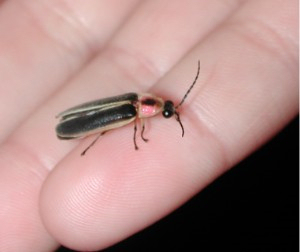
Tennessee State Insect: Firefly
This file is licensed under the Wikipedia
Creative Commons Attribution 2.0 Generic license.
The firefly was one of two official state insects that were designated by Public Chapter 292 of the Acts of 1975 after being signed into law by Governor Ray Blanton. The other was the ladybug or lady beetle.
The firefly belongs to the family Lampyridae which includes insects referred to as fireflies, lightning bugs, lightningbugs, and lightning bug beetles. The legislation referred to an insect known as a firefly or lightning bug beetle and did not name a particular species. The 2009-2010 Tennessee Blue Book mentions that, in Tennessee, Photinus pyralls is the most familiar species in its section on state insects.
The firefly, or lightning bug beetle, is the popular name of the luminescent insects of the Lampyridae family. In Tennessee, Photinus pyralls is the most familiar species. Their extraordinary light is generated in special organs and it is most often white, yellow, orange, greenish blue or reddish.
Rather small, they are blackish, brown, yellow or reddish in color. In certain species the females remain in the larvae state and are called glowworms.
Most fireflies produce short rhythmic flashes which provide a signaling system to bring the sexes together and also a protective mechanism to repel predators.
("2009-2010 Tennessee Blue Book" 548)
Tennessee Law
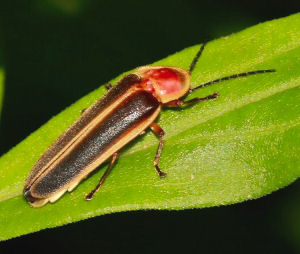
Tennessee State Insect: Firefly Photinus sp.
Credit: © 2008 Sam Houston, Courtesy of life.nbii.gov
The following information was excerpted from the Tennessee Code Annotates, Title 4, Chapter 1, Part 3, Section 4-1-308.
Title 4 State Government
Chapter 1 General Provisions
Part 3 State Symbols
Tenn. Code Ann. § 4-1-308 (2011)
4-1-308. State insects -- State agricultural insect.
(a) The well-known firefly, or lightning bug beetle, and the ladybird beetle, commonly known as the ladybug, are hereby designated as the official state insects.
(b) The honeybee is designated as the official agricultural insect of Tennessee in tribute to its fundamental role in the production of all crops.
HISTORY: Acts 1975, ch. 292, § 1; T.C.A., § 4-120; Acts 1990, ch. 725, § 1.
Sources...
The State of Tennessee. Tennessee Code Annotated. Nashville:State of Tennessee. Web. 10 August 2011
The State of Tennessee. 2009-2010 Tennessee Blue Book. Nashville:State of Tennessee, 2011. Web. 18 Aug 2011. .
Shearer, Benjamin F. and Barbara S. State Names, Seals, Flags and Symbols: A Historical Guide Third Edition, Revised and Expanded. Westport, Conn: Greenwood Press, 3 Sub edition, 2001.
Additional Information
Pennsylvania Firefly: Site designed for use by elementary age students in Northern Virginia to learn more about their local ecology. Island Creek Elementary School, Fairfax County Public Schools. The species discussed is Photuris pennsylvanicus, the state insect of Pennsylvania.
A Beacon in the Night: Entomology for Kids article by Lana Unger, Extension Entomology Specialist, University of Kentucky Department of Entomology.
Summer Night Lights: by Genny Fannucchi - Environmental Education for Kids, Wisconsin Department of Natural Resources.
Firefly (Lightning Bug) Lampyridae: Brief article and photograph from the National Geographic.
Firefly: Article from Texas A & M University, AgriLife Extension.
Fireflies: Nature's Lanterns: Article by Kerry Garrett in House and Home Online Magazine.
Firefly.org: Firefly.org is a non-profit project created by Ben Pfeiffer of Rank Smart to raise awareness to the decline of firefly populations in Texas, the US and worldwide. This site is intended to help educate those interested in how to bring back fireflies to their area.
Bioluminescent Insect Guide: How to spot the real thing - from FireFly.Org.
Photuris pennsylvanica (De Geer, 1774): Integrated Taxonomic Information System (ITIS) Here you will find authoritative taxonomic information on plants, animals, fungi, and microbes of North America and the world.
State insects: Complete list of official state insects from NETSTATE.COM.
More symbols & emblems: Complete list of official Tennessee state symbols from NETSTATE.COM.
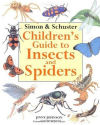
Children's Guide to
Insects and Spiders
Jinny Johnson
Simon & Schuster Children's Guide to Insects and Spiders , by Jinny Johnson. 64 pages. Simon & Schuster Children's Publishing (May 1, 1997) Reading level: Ages 4-8. A detailed introduction to spiders and insects contains information about every major group of arachnids and insects, hundreds of thought-provoking facts, and full-color pictures and photographs."
Eyewitness Workbooks: Insect, 48 pages. DK CHILDREN; Workbook edition (June 16, 2008) Reading level: Ages 4-8. Perfect for getting ahead at school or just stimulating children's interest, this groundbreaking series of workbooks leaves the competition in the dust, with exciting subjects, 48 full-color pages, a turn-and-learn info wheel, and special carrying folders. This book helps kids take their knowledge of insects to the next level, from battling beetles to buzzing honeybees.
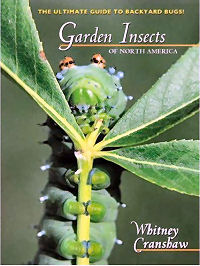
Garden Insects of North America
by Whitney Cranshaw
Garden Insects of North America: The Ultimate Guide to Backyard Bugs, by Whitney Cranshaw. 672 pages. Princeton University Press (March 8, 2004) Garden Insects of North America is the most comprehensive and user-friendly guide to the common insects and mites affecting yard and garden plants in North America. In a manner no previous book has come close to achieving, through full-color photos and concise, clear, scientifically accurate text, it describes the vast majority of species associated with shade trees and shrubs, turfgrass, flowers and ornamental plants, vegetables, and fruits--1,420 of them, including crickets, katydids, fruit flies, mealybugs, moths, maggots, borers, aphids, ants, bees, and many, many more.
Smithsonian Handbooks: Insects, by George C. McGavin. 256 pages. DK ADULT; 1st edition (October 1, 2002) Packed with over 650 crystal--clear photographs and illustrations with precise annotation to make identification sure and simple. Authoritative text, crystal--clear photography, and a systematic approach make this handbook the most comprehensive recognition guide to the insects, spiders, and other terrestrial arthropods of the world.
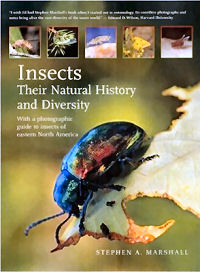
Insects by Stephen A. Marshall
Kaufman Field Guide to Insects of North America, by Eric R. Eaton, Kenn Kaufman. 392 pages. Houghton Mifflin Harcourt; 1 edition (February 28, 2007) In the new Kaufman Field Guide to Insects of North America, readers will find a wealth of information on the amazing observable behaviors of insects and their fascinating life histories. Naturalists Kenn Kaufman and Eric R. Eaton use a broad ecological approach rather than overly technical terms, making the book accessible and understandable for everyone. The guide is lavishly illustrated, with more than 2,350 digitally enhanced photographs representing every major group of insects found in North America north of Mexico.
National Wildlife Federation Field Guide to Insects and Spiders & Related Species of North America, by Arthur V. Evans. 496 pages. Sterling (May 31, 2007) National Wildlife Federation's new all-photographic field guide to North American insects, spiders, and related species, is the most up-to-date of its kind, and lets both amateur and expert naturalists identify more than 940 species quickly and accurately. More than 2,000 close-up color photographs by leading nature photographers reveal the field marks that distinguish each creature, and the clear and concise text that accompanies each image describes the range, habitat, life cycle, and behavior.
Insects: Their Natural History and Diversity, by Stephen A. Marshall. 736 pages. Firefly Books; Updated edition (June 2006) Meticulously researched and illustrated with color photographs, Insects is a landmark reference book that is ideal for any naturalist or entomologist. To enhance exact identification of insects, the photographs in this encyclopedic reference were taken in the field -- and are not pinned specimens.

